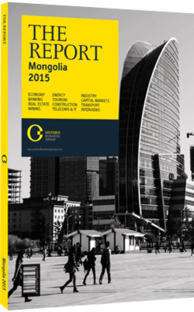New agreements between Mongolia and key neighbours set to boost foreign trade
Landlocked between two large markets, Mongolia has long used an activist trade policy to develop “third neighbours” and improve its terms of trade. The 1965 International Convention on Transit Trade of Landlocked States already grants it access to third markets, although quotas and transit tariffs are still subject to negotiations. Over the past decade, however, China has largely cornered the market for Mongolia’s mineral exports – despite pledges to allow up to 30% of exports to transit to third markets like Japan and South Korea – largely due to poor transport infrastructure and high transit tariffs. The Economic Partnership Agreement (EPA) signed with Japan in February 2015 should unlock trade between the two countries. Regional integration with China and Russia, as infrastructure is improved and market access enhanced, will prove complimentary to, rather than competitive with, Mongolia’s trade with its other neighbours.
Trade Agreements
Ever since it joined the World Trade Organisation in 1997, Mongolia has run an open trade policy, applying a flat “most-favoured-nation” tariff of 5% on more than 98% of its imports. Though the new EPA with Japan is its first full free trade agreement (FTA), Mongolia has several looser arrangements with key partners, as well as tariff-free access to sell primary industrial inputs like minerals to key export markets under the Generalised System of Preferences. A Partnership and Cooperation Agreement signed with the EU in April 2013 furnishes grants of €60m a year for seven years to bring local standards up to EU norms and enhance coordination in transport, mining, farming and finance. The Trade and Investment Framework Agreement signed with the US in 2004 is looser by comparison, merely creating a venue for discussing non-tariff barriers to trade and investment.
Mongolia has also made swift progress in joining key international trade forums. It has concluded negotiations to accede to the Asia-Pacific Trade Agreement, and in 2015 is likely to join the Asia-Pacific Economic Cooperation, which accounts for more than 90% of its in joining key international trade forums. It has concluded negotiations to accede to the Asia-Pacific Trade Agreement, and in 2015 is likely to join the Asia-Pacific Economic Cooperation, which accounts for more than 90% of its trade. While negotiations have been ongoing for FTAs with South Korea since 2008, with Russia since 2011 and with China since 2014, those with Japan – launched as recently as 2012 – have moved the fastest. By July 2014, the two sides had reached a “basic accord” and pledged to sign the deal in 2015, which they did in February, though it still awaited approval by Japan’s Diet. The EPA will, over the next decade, phase out tariffs on all Mongolian exports to Japan (except meat and minerals) and on 96% of Japanese exports to Mongolia.
Trade Support
Trade between the two countries already grew from $90.6m in 2009 to $309m in 2013, boosting Japan’s share from 2.33% to 3.33%, and is expected to go on rising. The aim is not just growth but better balance: minerals made up most of the $21m in goods exported to Japan in 2013, while cars and equipment were the lion’s share of the $288m in imports. The EPA’s reduction in tariffs on used cars – at first to 5% and then phased out over 10 years – will have the most immediate effect, since these make up a large portion of imports from Japan (45% in 2013). The 38.5% tariff on Mongolian meat will meanwhile be replaced by a quota system. Crucially, the inclusion of an “investorstate dispute settlement” clause, allowing firms to seek compensation if state policy negatively impacts their investments, should spur new deals in mining and trade.
In the longer term, the key to more trade with third countries will be logistics challenges and regulatory uncertainties. Dual-tracking and electrifying the Trans-Mongolian Railway to expand its annual capacity from 20m tonnes to 100m, as agreed with Russia in September 2014, will be an big step towards boosting exports of coal and iron ore. New narrow-gauge railways to the southern border, agreed with China in 2014, will enhance terms of trade for Mongolian coal. Above all, Mongolia will need to negotiate with China on its transit rights, which ought to allow a third of its exports to go to third countries. The Chinese president reiterated his support for this during his August 2014 visit, but the real hurdle will be hashing out quotas and logistics costs.
You have reached the limit of premium articles you can view for free.
Choose from the options below to purchase print or digital editions of our Reports. You can also purchase a website subscription giving you unlimited access to all of our Reports online for 12 months.
If you have already purchased this Report or have a website subscription, please login to continue.

